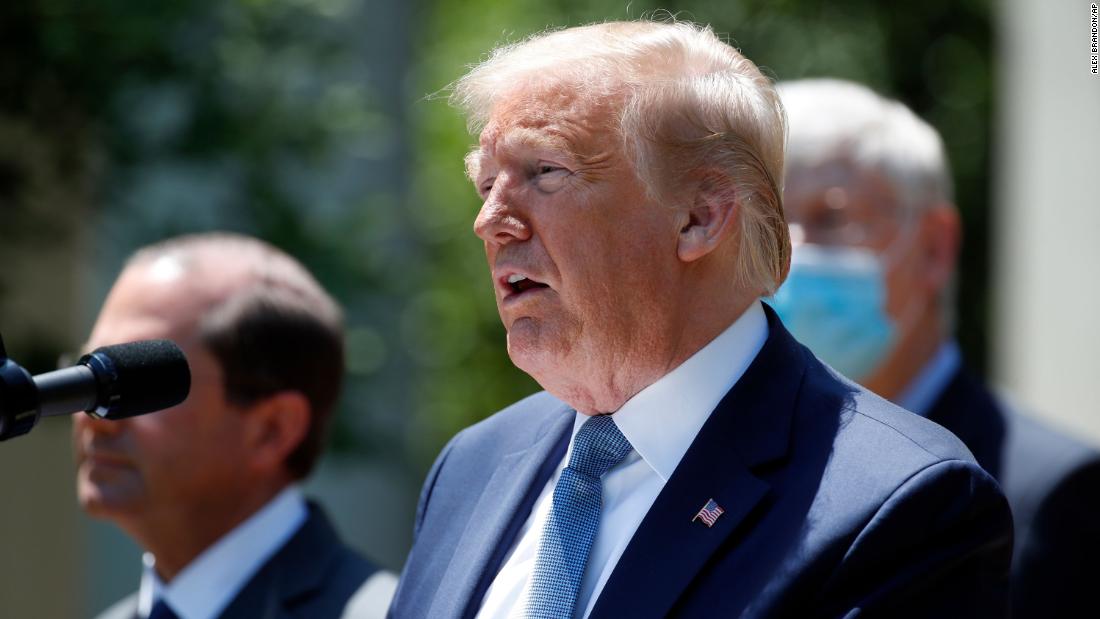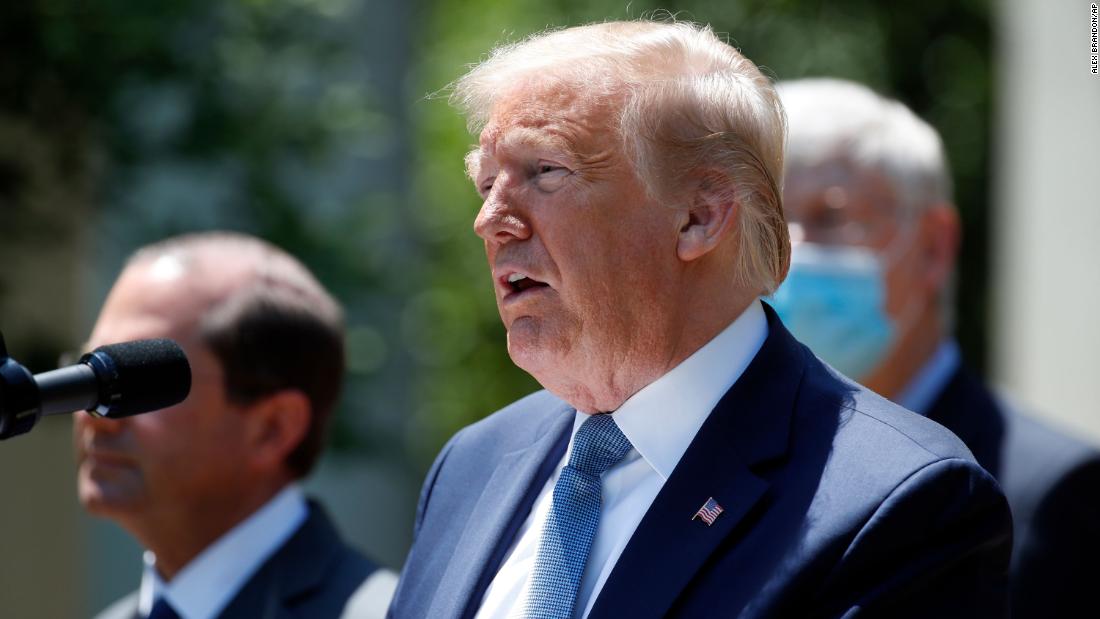He declared that the administration is “reigniting
our economic engines” as most states move toward reopening. He said that America has the “largest and most ambitious testing system in the world” (an echo of the giant “America Leads The World in Testing” campaign-style banners that the White House erected for Monday’s briefing). And Trump promised that the administration’s vaccine development effort — “Operation Warp Speed” — will be “a massive scientific, industrial, and logistical endeavor unlike anything our country has seen since the Manhattan Project.”
“Vaccine or no vaccine, we’re back,”
Trump said Friday. “We think we are going to have a vaccine in the pretty near future, and if we do, we are going to really be a big step ahead, and if we don’t, we are going to be like so many other cases where you had a problem come in — it’ll go away at some point, it’ll go away.”
Buttressing Trump’s attempts to project the image of a more forceful commander in chief, White House Press Secretary Kayleigh McEnany once again used the briefing room to try to recast the history around the Trump administration’s inability to contain the spread of the virus — stepping up efforts to shift blame to the Obama administration for everything from pandemic plans to the depleted
Strategic National Stockpile.
Trump’s coronavirus trust deficit
The White House’s more strategic effort to go on offense comes during a week when the rate of positive test results is on the decline nationwide. States are only beginning to reopen, so it may be too early to see evidence of new infections, but a downward trend in many states offered a
glimmer of good news for the administration after two months of triage.
CNN’s election
poll released this week showed former Vice President Joe Biden leading Trump 51% to 46% nationally among registered voters. But in an encouraging sign for Trump, 52% of those voters in key battleground states favored the President compared to 45% who backed Biden.
Despite stunning job losses and a contracting US economy, Trump’s approval rating on the economy held steady at 50% in the latest
CNN/SSRS national poll, a figure, CNN’s Harry Enten pointed out, that is just one point
below his average since the 2018 midterm elections. (Trump held a 12-point advantage over Biden when voters were asked who they trusted most to handle the economy.)
Still, numerous polls have shown that Trump is facing a persistent trust deficit when it comes to his handling of the coronavirus. In CNN’s poll, Biden held a 6-point advantage over Trump when asked who would better handle the response to the pandemic. In a
Pew Research Center poll released this week, only 41 percent of Americans said Trump had done a “good” or “excellent” job responding to the coronavirus outbreak. By contrast, more than 60% gave that “good” or “excellent” rating to their state and local elected officials.
That is a politically perilous situation for a President who will be seeking reelection in the middle of a recession while facing the very real possibility that the nation will be hit with a second wave of the virus. Trump’s best hope for a reprieve could come in the form of improved treatments for coronavirus or a promising development around a
potential vaccine.
On Friday, Trump once again said he hoped a vaccine could be produced by the end of the year, even though that process usually
takes several years from development through Food and Drug Administration approval. Four-star Army Gen. Gustave Perna — one of two leaders chosen to lead the effort — described that goal as a “Herculean task.”
Standing next to Trump in the Rose Garden, the chief adviser named by Trump for the vaccine effort, Moncef Slaoui, the former head of GlaxoSmithKline’s vaccine’s division, said early data he has seen from a clinical trial of a coronavirus vaccine made him “feel even more confident that we will be able to deliver a few hundred million doses of vaccine by the end of 2020.”
An effort to rewrite history
From the early days of the pandemic, Trump has sought to blame Obama for the depletion of the federal stockpile, which led to the frantic scramble for ventilators and personal protective equipment, as well as a
bidding war among states, during the early weeks of the crisis.
McEnany doubled down on that message Friday when she spent much of her briefing criticizing the Obama administration for leaving “the stockpile empty” after other crises, including the 2009 H1N1 outbreak.
CNN has determined that both the Obama administration and the Trump administration
failed to heed warnings that the stockpile needed to be replenished with masks and other medical supplies.
McEnany defended the Trump administration’s struggles to obtain a sufficient amount of the masks, gloves and other personal protective equipment that the states were clamoring for — a struggle that was hampered by Trump’s delay in invoking the
Defense Production Act — by insisting that Trump has overseen a level of collaboration with the private sector that “will become the playbook for dealing with future pandemics.”
When reporters pointed out that Trump was in office for three years before the pandemic, McEnany said Secretary of Health and Human Services Alex Azar told her the stockpile wasn’t filled with medical equipment sooner because the administration was focused on the threat of a biological attack.
“When we got to the federal government … we were in very hostile confrontations with several powers because of the Obama administration’s foreign policy, and there were real bioterrorism threats,” McEnany said Friday without offering any examples of what those threats were. “That was the immediate threat that the administration focused on in terms of the stockpile.”
In a theatrical flourish, McEnany entered the room armed with visuals to try to undercut reporting that the Trump administration “threw out the
pandemic response playbook left by the Obama-Biden administration.
” She waved a white packet of paper in the air.
“What the critics failed to note, however, is that this thin packet of paper was replaced by two detailed, robust pandemic response reports commissioned by the Trump administration,” she said, holding up two large black binders that she said were the Trump administration’s plan.
Earlier this week, Senate Majority Leader Mitch McConnell
falsely claimed that the Obama administration did not leave “any kind of game plan” for the pandemic. Ron Klain, the former Obama administration Ebola response coordinator (among many others), tweeted that Obama’s team left them a “69-page pandemic playbook … that they ignored.”
During an interview with Fox News Thursday, McConnell acknowledged
he was wrong: “They did leave behind a plan. So, I clearly made a mistake in that regard,” he said.


